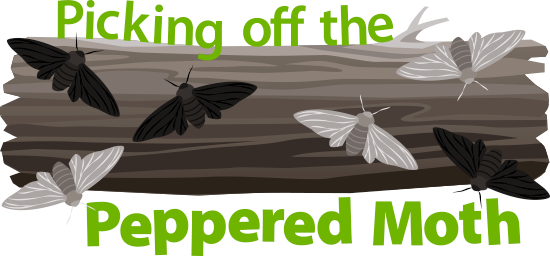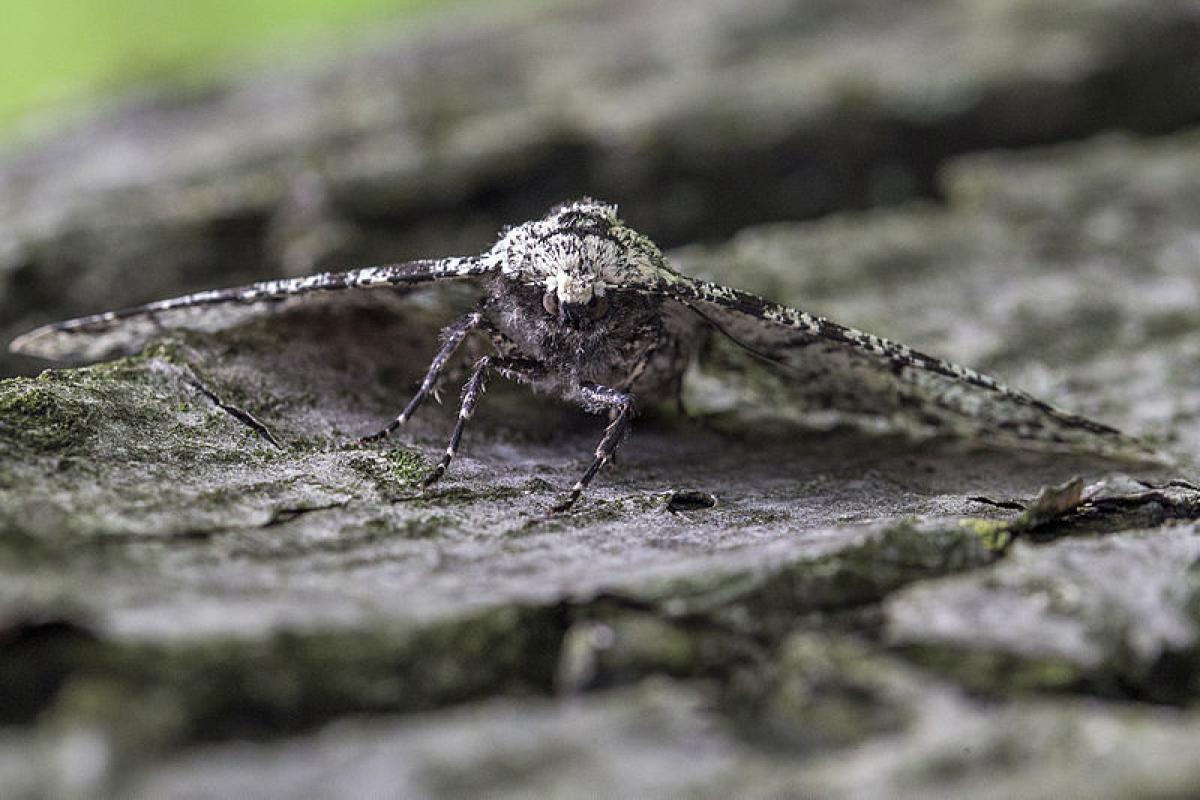
Moth Hunting

Get your beaks ready, it's moth-hunting time. If you don't have a beak or you aren't used to hunting moths, don't worry. The game you are about to play is still a good example of the fight for survival that all organisms take part in.
Moths and birds are just a few of the organisms that must try to find food and avoid being hunted if they are going to survive.
With the Peppered Moths simulation, you take on the role of the hunter and learn at least one reason why you might eat one moth instead of another. As you select certain moths, you can change how many dark or light moths there are in the population.
And if you want to go a bit deeper into the adaptation story than the game will take you, visit our peppered moth story and associated lesson: Sooty Selection.
Play the Peppered Moths Game
Click on the "Bird's eye view" icon to play the game, but don't miss out on learning about the peppered moth life cycle or Dr. Kettlewell's experiments.
Happy moth hunting!
Peppered Moth Simulation: Ask A Biologist tries to ensure proper permissions before posting items on this website. For this game we have not been able to identify or contact the current copyright owner. We acquired the game at peppermoths.weebly.com. If you have information regarding the copyright owner, please contact Ask A Biologist using the feedback link in the gold box to the right.
Additional images via Wikimedia Commons. Peppered moth front view by Jerzy Strzelecki.
Read more about: Picking off the Peppered Moth
Bibliographic details:
- Article: Picking off the Peppered Moth
- Author(s): Dr. Biology
- Publisher: Arizona State University School of Life Sciences Ask A Biologist
- Site name: ASU - Ask A Biologist
- Date published: 25 Mar, 2015
- Date accessed:
- Link: https://askabiologist.asu.edu/activities/peppered-moth
APA Style
Dr. Biology. (Wed, 03/25/2015 - 11:39). Picking off the Peppered Moth. ASU - Ask A Biologist. Retrieved from https://askabiologist.asu.edu/activities/peppered-moth
Chicago Manual of Style
Dr. Biology. "Picking off the Peppered Moth". ASU - Ask A Biologist. 25 Mar 2015. https://askabiologist.asu.edu/activities/peppered-moth
Dr. Biology. "Picking off the Peppered Moth". ASU - Ask A Biologist. 25 Mar 2015. ASU - Ask A Biologist, Web. https://askabiologist.asu.edu/activities/peppered-moth
MLA 2017 Style

Be Part of
Ask A Biologist
By volunteering, or simply sending us feedback on the site. Scientists, teachers, writers, illustrators, and translators are all important to the program. If you are interested in helping with the website we have a Volunteers page to get the process started.

